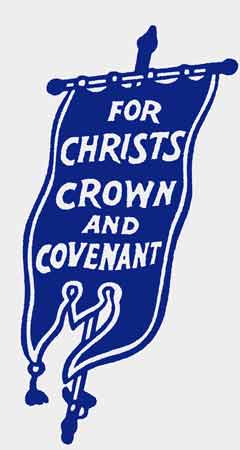The Blue Banner
On special occasions in both the Old and New Testaments, believers covenanted together that they would obey the Lord. At the time of the Reformation, believers in Scotland adopted this practice for mutual protection and for the advancement of Biblical Christianity. On at least three occasions (1581, 1638, and 1643) the entire nation covenanted in this way.
These covenants embraced the whole orbit of Christian faith and experience, emphasizing such great themes as repentance, grace, and obedience. They also maintained that the King (or the State) cannot govern the Church, and that the State itself must recognize the supreme Kingship of Christ. The Reformed believers, known as Covenanters (from their support of the covenants), insisted on “the crown rights of King Jesus,” which brought them into conflict with those who supported “the divine rights of kings.” The blue banner bearing the motto “For Christ’s Crown and Covenant”originated as a battle flag for these Covenanters. It first appeared in 1639 with the Covenanter army under General Alexander Leslie, First Earl of Leven.
During the period of most intense persecution (1680-1688), some 18,000 men, women, and children died in battle, were executed, killed without process of law, or exiled, for their faithfulness to “Christ’s Crown and Covenant”. Since the end of “the killing time,” the Blue Banner has continued to serve as a symbol of the Reformed faith.
The Reformed Presbyterian Church is the continuation of the Covenanter Church in Scotland, and treasures the testimony and heritage which God has given to it. The banner itself has no theological significance, but serves as a reminder of our commitment to the great truths of the Word of God.


